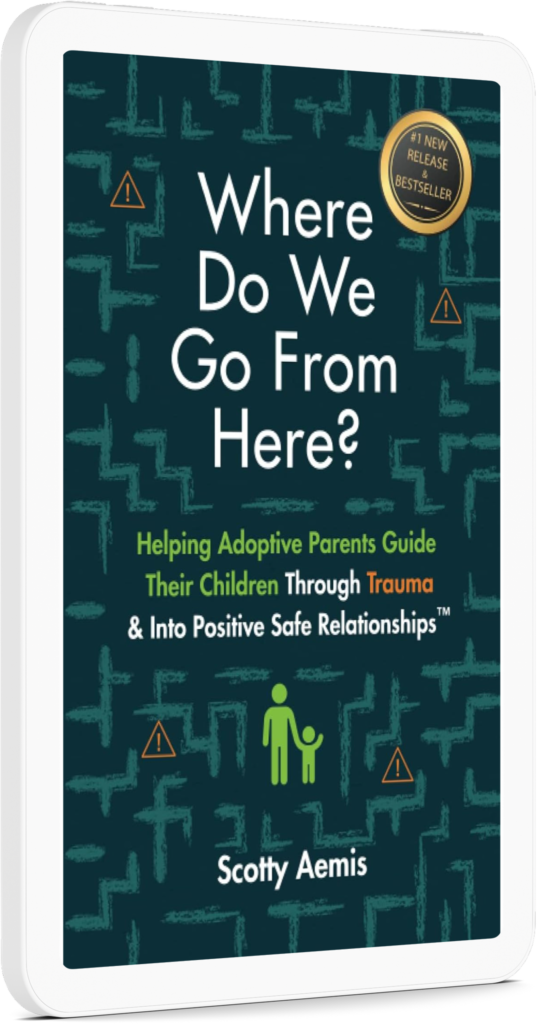The Negative Consequences of Trauma-Induced Hypervigilance Plus Ways to Heal from Trauma
The brain is designed to be aware of potential dangers in your surroundings. While it helped early humans survive, our brains aren’t meant to be in this excited, sensitive state all of the time. This is known as hypervigilance.
What Causes Hypervigilance?
When a person is exposed to repeated trauma, it immerses you in an unpredictable environment that constantly has you on edge. Even after leaving a traumatic environment or situation, a person can continue to feel on edge, just waiting for something bad to happen again. There are subtle clues that a child or person who has experienced trauma learns to pick up on to help keep them safe. Constant vigilance for picking up on these clues, or triggers, is about self-protection.
What Hypervigilance Looks Like
Here are some examples of hypervigilance:
- Hyperfixation on your surroundings: this is especially common for people who have experienced violence; can manifest by needing to sleep with the lights on or jumping at the slightest noise or motion.
- Hyperfixation on the thoughts and feelings of others: those who are hypervigilant are diligently looking for slight changes in behavior, tone, cadence, body language, written communication, or even sentence structure; these are the clues they are watching for to keep them safe.
- Hyperfixation on your own body or mind: this is common in those who have experienced medical trauma, such as a severe illness (their own or a family member’s); any minor ache or pain can cause concern and create a cycle of worry.
- Catastrophizing: this is when a person is attempting to understand a situation, but the narrative gets spun in a negative way, such as being preoccupied with the worst-case scenario; this can make it hard to let down your guard and enjoy happy moments, leaving you anxious.
- Avoidant behavior: it’s normal to change your behavior in response to a traumatic experience, however, a person who is hypervigilant takes that response too far; this can impact education, career, and other areas of life, making it difficult to try new activities or learn new things because of fear.
- Insecurity: hypervigilant individuals may struggle with clinginess, people-pleasing, emotional regulation problems, and trust issues; they often avoid their own needs to avoid conflict and always worry they are doing something wrong.
The Negative Impacts of Hypervigilance
Unfortunately, hypervigilance can lead to negative health and behavioral consequences.
Because the body is constantly being flooded with adrenaline and cortisol, it can have a huge impact on one’s physical, mental, and behavioral well-being. Over time you can become exhausted and experience frequent physical illness. It can lead to difficulty sleeping and gastrointestinal issues.
All that pressure and stress can impact your mental state as well. Individuals with hypervigilance may struggle to pay attention, may be more irritable, or be more inclined to fight with others or have emotional outbursts. On the other end, it could also lead to isolation and mood issues such as depression.
Hypervigilance can also have a negative impact on relationships, creating a double-edged sword. While hypervigilant individuals are more likely to notice negative behavior or “red flags,” that prevent them from getting into dangerous relationships, it can also have the opposite effect. It makes it difficult to trust others, creating an anxious attachment style where they make assumptions about others, become overly sensitive to feedback, or need constant reassurance.
All of these negative consequences can make hypervigilance self-perpetuating. This kind of positive reinforcement can be damaging and lead a hypervigilant individual to accept their understanding of the world around them.
Coping with Hypervigilance and Healing Trauma
Despite all of these negative consequences, there is hope! There are a lot of ways to cope with hypervigilance and to heal trauma! The brain is resilient and is constantly creating new pathways. With the right treatments, there are ways to help regulate the brain and eventually heal from trauma. Here are just some of the ways you can cope with hypervigilance and treat trauma:
- Trauma-Informed Therapy: Therapy can help address hypervigilance and treat trauma. It can help individuals identify triggers and better understand why those triggers create a sense of panic or hyper-awareness. Therapy can also be a great place to work on distinguishing between feelings and facts, and how past trauma might be influencing the present. Counselors can also help individuals learn coping mechanisms that help them regulate better.
- Grounding Exercises: Learning to calm yourself with grounding exercises such as deep breathing, counting, self-talk, or other soothing activities can be helpful. This calms down the fight-or-flight response, minimizing or stopping catastrophizing and helping an individual think more rationally and be in the present moment.
- Mindfulness: While grounding is great for in-the-moment coping, mindfulness can help reduce overall stress and anxiety. Mindfulness is the practice of focusing on what’s happening on the inside instead of what is on the outside, allowing an individual to decode what they’re thinking or feeling. Practicing mindfulness allows you to look at situations neutrally and without judgment. It’s important to choose an activity that resonates for you.
- Medication: Some individuals may need extra help calming down their nervous system. Work with your healthcare professional to understand if and what medications may be right for you.
- Positive Safe Relationships: Those who interact with an individual who has experienced trauma should focus on creating a positive, safe relationship with the affected individual. This helps eliminate unsafe and retraumatizing events, relationships, and peer groups, helping to create an environment that is more conducive to healing.
Final Thoughts
Hypervigilance is a state of being that individuals who have experienced trauma are in. Constantly being in fight-or-flight mode can literally alter the brain and lead to changes in behavior. Over time, this can lead to severe physical and mental consequences. But with a trauma-informed approach to treatment, those with trauma can learn to cope with their hypervigilance and begin to heal from their trauma.

